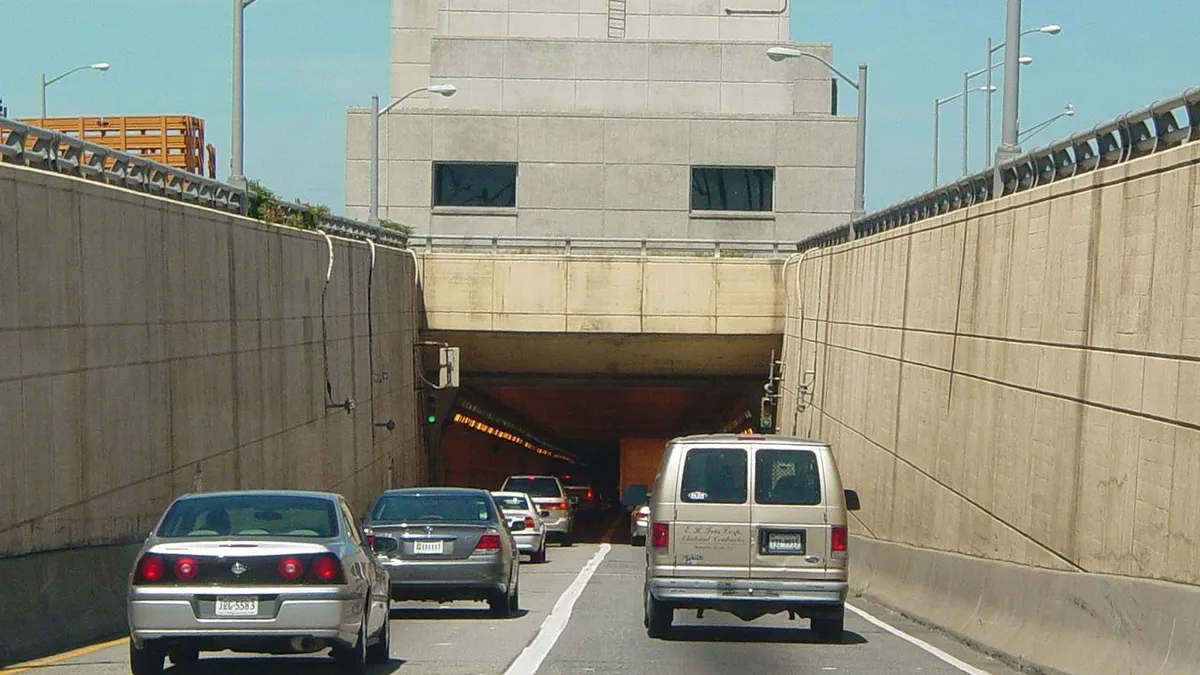Dive Brief:
- Virginia Gov. Ralph Northam announced that the state has chosen Hampton Roads Connector Partners (HRCP) to design and build the $3.3 billion Hampton Roads Bridge-Tunnel (HRBT) expansion project. This is the biggest project in the Virginia Department of Transportation's history.
- HRCP consists of contractors Dragados USA, Flatiron Construction and the Vinci subsidiaries of Vinci Construction Grands Projets and Dodin Campenon Bernard. The team also includes HDR Engineering and Mott MacDonald. The group will build a four-lane tunnel and widen an existing four-lane portion of Interstate 64 to eight lanes between Hampton, Virginia, and Norfolk, Virginia. The new tunnel will handle eastbound traffic and will use one or more high-occupancy lanes in each direction.
- “This project supports and expands critical transportation infrastructure, creating opportunity for families, military personnel and businesses in the Hampton Roads region,” Northam said in a written statement. “I am proud of the hard work and negotiations ... to deliver significant improvements that will relieve daily congestion, increase safety, and drive economic growth throughout this important corridor.”
Dive Insight:
The team that HRCP beat out to win the project was Hampton Roads Capacity Constructors, which was comprised of Fluor Corp., The Lane Construction Co., Traylor Bros., Bouygues Construction and AECOM.
In addition to being the VDOT’s largest project ever, this is the first time that the state will use the bored-tunnel construction method, which is expected to be less disruptive to both military and civilian maritime traffic and will allow shipping activity to continue fairly uninterrupted during the course of the project. Because of advancements in technology, boring a tunnel will also likely do less damage to the environment than other methods the VDOT has used in the past.
Tunnel boring is a specialty in which contractors need a wealth of experience, as well as access to very expensive tunnel boring machines, or TBMs. In 2013 dollars, the TBM that Dragados used for the $2 billion tunnel portion of the $3.3 billion Alaskan Way Viaduct Replacement Project in Seattle was a reported $80 million. Dragados is also participating in major TBM projects, like the $11 billion East Side Access project in New York City and the $756 million Chesapeake Bay Bridge-Tunnel in Virginia.
Despite the big price tag, more tunneling projects seem to be using TBMs, and according to the former president of capital construction for New York City’s Metropolitan Transportation Authority, Michael Horodniceanu, one of the reasons is cost savings. Horodniceanu told The Wall Street Journal in 2016 that TBMs were so much more efficient than other digging systems that they reduced the per foot cost of a three-mile section of the East Side Access tunnel from $1 million per foot to $19,000 per foot.











